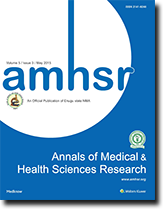

Introduction: Intra uterine fetal death (IUFD), means the intrauterine death of the fetus before birth after 20 weeks of gestation, with a fetus weighing more than 500 g. The main causes can be classified into three groups of maternal, fetal, and placenta causes. Aim: The aim of the present systematic review and meta-analysis was to assess the prevalence of intrauterine fetal death in Iran. Methods: The prevalence of intrauterine fetal death was defined based on the international criteria and the measured outcome of the disease. Study selection, data extraction, and quality assessment were performed by two independent reviewers. Qualified studies were searched in Medline (PubMed), web of science, and Embase. All peer reviewed articles published by the end of 2017 were included during the process of searching. Cochran test and I2 index were used to evaluate heterogeneity of studies. Collected data was analyzed using Stata 12.0. Results: Of 263 studies, 5 studies utilized meta-analysis In 2017, the pooled overall prevalence of intrauterine fetal death in 44161 people was 4.9% (95% confidence interval [CI]:2.50, 4.60, I2 = 98.60%). Conclusion: Regarding the high prevalence of intrauterine fetal death in Iran two basic cases, including the birth registration of all babies and the provision of appropriate pregnancy care are essential in order to prevent stillbirth. To reduce the incidence of stillbirths, it is necessary to record the prevalence, untimely deaths, and the ways in which risk factors lead to stillbirths with higher precision and accuracy; finally, it is necessary to evaluate strategies the implementation of which might decrease the rate of stillbirth.
Select your language of interest to view the total content in your interested language
Annals of Medical and Health Sciences Research received 24805 citations as per google scholar report
 The Annals of Medical and Health Sciences Research is a monthly multidisciplinary medical journal.
The Annals of Medical and Health Sciences Research is a monthly multidisciplinary medical journal.